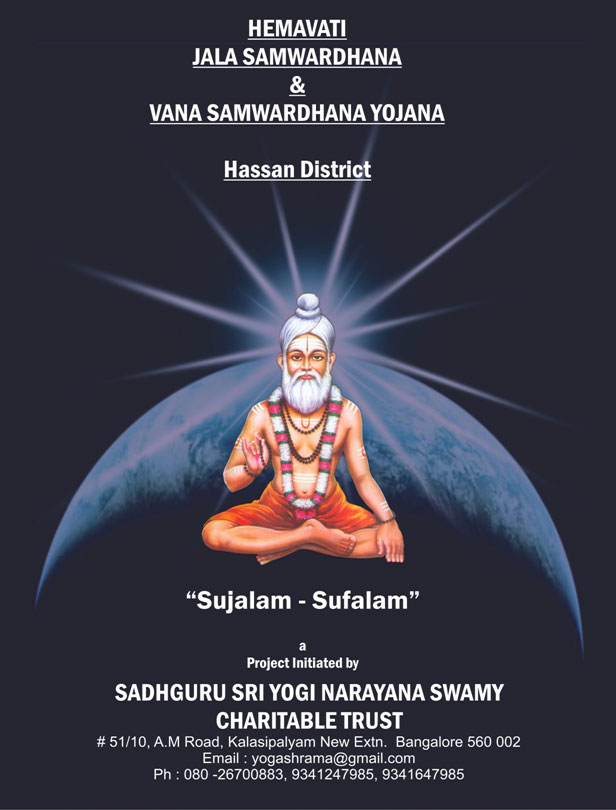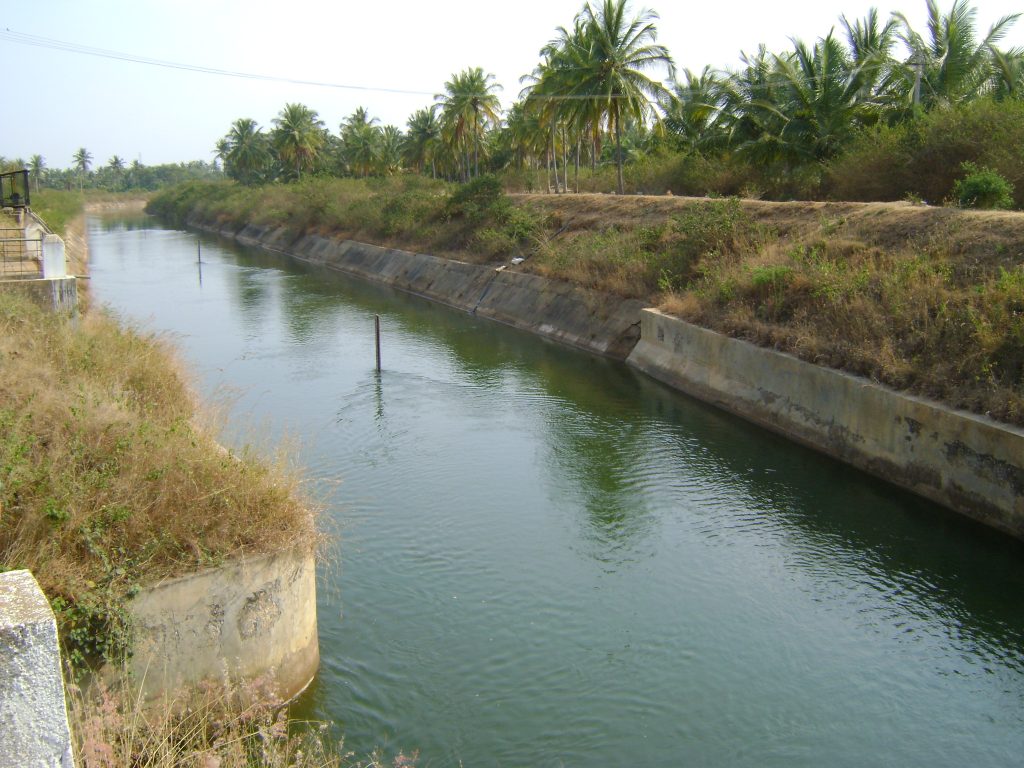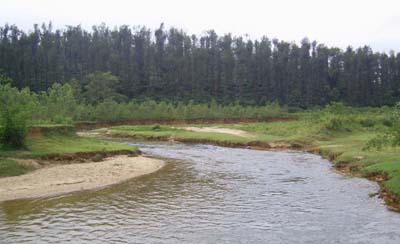Our Future Project
Hemavati Jala Samwardhana &
Vana Samwardhana Yojana (HJSVSY)
Hemavati Jala Samwardhana & Vana Samwardhana Yojana (HJSVSY) is a intiative of Sadhuguru Sri Yogi Narayana Swamy Charitable Trust a non-profit organization committed to conservation of biodiversity, supported by it office bearers and the community initiated by the trust forming 140 sub centers across the region of Hemavati river belt.
Introduction
Hemavati Jala Samwardhana & Vana Samwardhana Yojana (HJSVSY) is a intiative of Sadhuguru Sri Yogi Narayana Swamy Charitable Trust a non-profit organization committed to conservation of biodiversity, supported by it office bearers and the community initiated by the trust forming 140 sub centers across the region of Hemavati river belt.
This project will engage civil society, such as village community groups, and private enterprises in contributing in various forms to be alliance to make this project a success and to set a example for the building of awareness among the youth for “Conservation & Afforestation” in this region.
The Western Ghats region comprising of the Hemavati river belt, has its unique assemblages of plant communities and endemic species, is globally important for conserving biodiversity, this project requires immense attention on priority basis.
The project focus only on the rural development in conserving biodiversity “ Sujalam Sufalam” as its motto and slogan, with contribution from the local community without any political mileage & boundaries.

Profile
The project extends along the Hemavati river belts and watershed areas surrounding 30 Km areas on both side of the riverbank covering total area of 1500 Square Kilometers. Total 840 village will be covered comprising of govt land, dry land, river belts, sub-channel region, village connecting road, sub-road, reserve forest land etc, were the Afforestation program will be implemented.
The region contains numerous medicinal plants and important genetic resources, which are getting endangered due to cutting down of the forest areas leading to imbalance in the ecosystem of the region.
This project will work with diverse social, religious, and linguistic groups and established religious institutions that strongly influence public opinion in decision-making process. Conservation challenges in engaging these social groups and involving them in community effort aimed at innovative and effective approaches to conservation and consolidation of importance of forests to human society.
The basic philosophy of this project is the total involvement of the beneficiary community in the programme, which in turn is conjointed approach of the sponsoring agency and local people with the implementing agency for this cause.
Background & Importance
HJSVSY project is a five-year strategy program consisting of Nursery development, Planting, Implementation and Maintenance of Western Ghats species of trees. The basic data is prepared by the trust with the support of local community coming forward to support this project in consultation with environment experts and agriculturists, With a main focus been to encourage the community to grow local species of trees developed & grown in Trust owned nursery, to be distributed and planted by the trust free of cost in thousands & lakhs in village areas, thereby working on conservation of soil and water, habitats for birds and preserving bio-diversity in the region developing under local societies.


Scope & Implementation
The Project area consist of total 9 talluks, 1 taluk from Kodagu dist, 6 taluk from Hassan dist and 2 taluk of Mandya dist comprising of Hemavati river belt. Five year project period consists of development of Nursery in the first year, Nursery will be developed in 3 acres in each taluk in a designated Temporary land of Govt reserved forest with water resource, aggregating to 60 acres of nursery in 9 taluk, the Planting period is for 2 months i.e. in the month of June & July, & next four years will be maintenance period with the help of local community.
Local Community Centre (LCC) shall be created in all taluk, total 140 centers will be created in 840 villages with the help of Project Coordinators (PC), appointed by the trust for this purpose, PC will be from the local areas and will be responsible for creating LCC and each village panchayat areas will plant 50,000 plants which are useful for human, birds & animals. The plants chosen for planting will have long life, with high resistance power & last longer in varied climatic condition know to environment experts & agriculturists.
Project Coordinators are appointed on salary basis by the trust to provide the much needed help and assistance at the village level to promote plantation efforts on a massive scale in their territory by mobilizing the local community to provide spirit and energy. This is basis for making the programme a massive movement.
Therefore it is necessary to understand the certain characteristics responsibilities of the Project Coordinators who are employed.
- A total of 280 PC will be appointed two each in 140 centers benefiting 840 villages.
- They will be provided necessary training in forestry & to make them effective extension agents training will be given on technical skill & professional competency consistent with the need.
- To formulate pragmatic training courses during lean season on plan formulation, implementation and monitoring vital issues of concern.
- The PC is positioned in the village for the exclusive purpose of establishing support with the village community for achieving the overall objective of the social forestry and agro forestry programme. It is very essential for the PC to make the presence felt in his area of operation and extend on the spot technical services and physical assistance to the villagers.
- To address elicit information on various issues and characteristics and answer certain qualitative questions to the village community.
- The PC is entrusted with the responsibility of social awareness, event programme, nursery care, distribution of seedlings, protection and such other related jobs.
- To propagate plants known to the local community for their medicinal properties.
- To conduct workshops for farmers and school-children to give live demonstrations on the importance of biodiversity conservation.
- PC is sought to achieve the overall objective “ to INFORM, to INSTRUCT, to INSPIRE” for their total commitment in their respective Village area.
Types of Plantation
It is estimated that there are four thousand species of flowering plants known from the Western Ghats and 650 tree species; Maximum of all fruit bearing trees and useful trees for mankind will be covered in this project, these include, Albizzia Sp., Neem, Pongamia, Jackfruit (Artocarpus integrefolia), Mangium (Acacia mangium), Pipal Tree (Ficus religiosa), Fig (Ficus Sp.), Tamarind (Tamarindus indica), Cashew (Anacardium occidentale), Fire-of-the-Forest (Butea monosperma), Soapnut, Sesbania, Raintree, etc. Planting eucalyptus is strongly discouraged, for it tends to destroy the local bio-diversity.
The other economically important species. Trees that yield timber and fuelwood include Dalbergia spp., Dipterocarpus spp. and Hopea spp.
Non-wood forest species provide:
- Fibre (e.g., bamboo, rattan)
· Food
-Edible fruits (e.g., Artocarpus hirsutus, Garcinia indica)
-Edible nuts (e.g., Sterculia guttata, Terminalia bellerica)
-Spices and condiments (e.g., Garcinia gummi-gutta, Piper nigrum)
- Extractive products
-Gums, resins and oleoresins (e.g., Canarium stictum, Vateria indica)
-Tans and dyes (e.g. Garcinia morella, Terminalia spp.)
-Essential oils (e.g., Cymbopogon spp., Mesua ferrea)
- Medicines (e.g., Dioscorea spp., Rauwolfia serpentina)
Area To be covered : 30 Km areas on both side of the Hemavati River Belt bank watershed areas (Western Ghats)
- Kodugu Distt.- Somwarpet Taluk
- Hassan Distt.- Sakleshpur Taluk, Alur Taluk, Hassan Taluk, Hole Narsingpur Taluk, Harkalgudu Taluk, Chanrayapatana Taluk.
- Mandya Distt.- K R pet Taluk, Nagamangala Taluk, Pandavapura Taluk
Monitoring Mechanism
Graameena Vikas Yuva Jagruthi Sangha:
A total of 1500 plot watcher shall be engaged by the Local Community Centre (LCC) to look after their own establishment, protection, maintenance and harvest of the forest plantation, this community thus play an important role in progress of the social forestry work.
In India 95% of the social forestry programme has failed or not succeed because of failure of monitoring mechanism in village community level, & non-involvement of the local community to monitor and safe guard the Afforestation programme.
Responsibilities of the Local Community Centre (LCC)
- To bring together the like-minded villagers to form a 5-member community as their working member for implementing social forestry programme.
- To engage and supervise local labor for planting and watering of the plant on five year programming.
- To give full cooperation to PC in contributing towards the responsibility of nursery care, distribution of seedlings, protection and such other related jobs.
- To give full cooperation to PC in supporting various cultural activities initiated by the Trust for educating about afforestation programme in the village.
- To keep watch on thefts, Pilferages, illicit fellings & to create social control on one hand & regulatory measures on the other to curb this menace.
To supervise, prevent & regulated in the village the menace of stray cattle & unrestricted grazing of animals in the afforestation area.